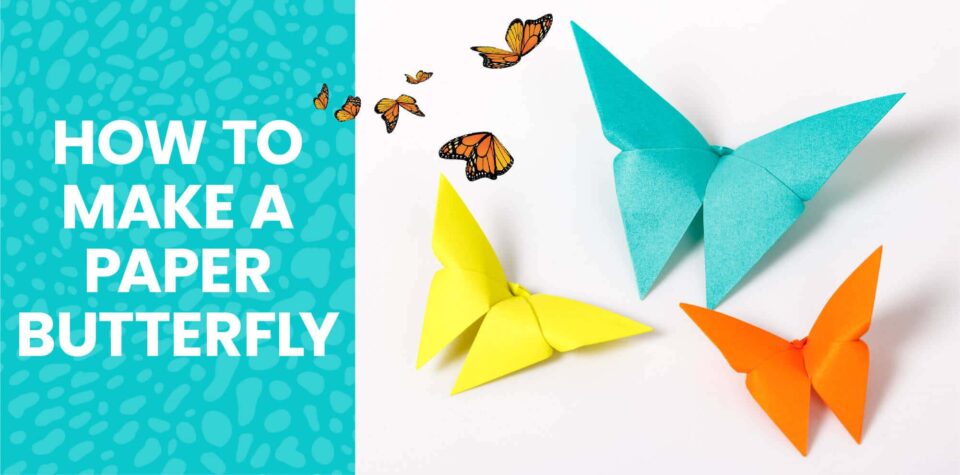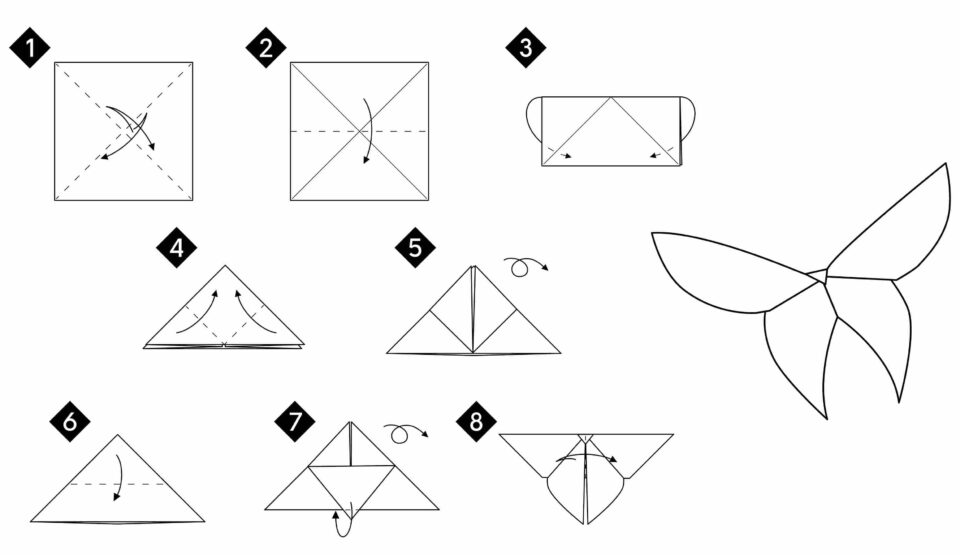
Connect with Nature with This Colorful Butterfly Craft
Watching a butterfly flit across a garden, park, or backyard is a delightful experience. These delicate wonders of nature can be found all around the world and in most types of habitats, including deserts, forests, and wetlands.
Butterflies have attracted people’s attention since ancient times. In several ancient cultures, including those of Egypt and Greece, the butterfly symbolized the human soul. In Taiwan, butterflies are considered good luck, frequently appearing in Taiwanese art and architecture.
There are more than 17,000 species of butterflies, and each one is uniquely eye-catching and beautiful. Here are a few:
- Peacock: Adorned with bluish spots and splashes of red, this butterfly can be found throughout Britain and Ireland.
- Monarch: This orange and black butterfly has perhaps the most sophisticated migration pattern of any insect in the world. Every fall, monarch butterflies travel from the northeastern U.S. and southern Canada to southwestern Mexico—over 3,000 miles! This great distance is a feat in itself, but monarch butterflies also navigate during their journey by measuring the sun’s position on the horizon.
- Marbled white: A black and white butterfly with a fuzzy body, this insect has shown it prefers purple flowers over other colors of flora.
- Blue morpho: With bright blue wings edged with black, this is one of the largest butterflies in the world. The blue morpho’s wings can span from five to eight inches (about 12 to 20 centimeters).
- Zebra swallowtail: Decorated with stripes of black and white, this butterfly has long “tails” protruding from the bottoms of its wings.
Butterflies feed on nectar from flowers. When they touch down for a tasty meal, their bodies trap and collect pollen and carry it to other plants. Many plants need pollinators like butterflies to create seeds and fruit, which makes butterflies an important part of many ecosystems.
Unfortunately, the populations of several species of butterfly are rapidly declining due to climate change, habitat destruction, and other factors. Monarch butterflies are the most prominent example: In the western U.S., populations have declined by an estimated 99.9 percent since the 1980s.
Whether you live somewhere with lots of butterflies or have never seen one in person before, teaching your children about the importance of conservation will help them foster an appreciation for nature. And there’s no better way to get kids excited to learn than by having them participate in a hands-on craft! Showing young ones how to make a butterfly out of paper is more than a fun activity—it’s an opportunity to talk about the gorgeous insects that bring joy and hope to people around the world.
Recreating Nature’s Wonders at Home
Learning how to make a butterfly out of paper is a fun way to help children appreciate one of nature’s most elegant and fragile creatures. With this activity, young crafters can recreate their favorite species of butterfly or design a unique insect of their own! Best of all, your kids’ DIY paper butterflies can double as artwork when they’re done. They can be glued to hair clips, strung on a garland, or attached to a card to add some extra flair.

How to Make a Paper Butterfly
Here’s a step-by-step tutorial on how to make a butterfly using origami techniques.
Materials
- Colorful origami or craft paper
- Nontoxic glue
- Child-safe scissors
Directions
- Start with a square piece of origami or craft paper (an adult may need to cut the paper into a square). The size of the square is up to you—remember, a larger paper square means a larger butterfly.
- Help kids fold and unfold the paper 3 times: in half horizontally and in half diagonally in both directions to form an “X” shape (see figures 1 and 2 in the image above). This will create creases to assist with future folds.
- Fold the paper along the horizontal crease. Next, push the top left and right corners downward and between the top and bottom layers of paper, matching the creases created by the diagonal folds in step 2 (see figure 3 in the image above). This will turn your paper into a small triangle.
- The bottom corners of your triangle will consist of four layers of paper. Fold the top two layers of the bottom left and right corners of the triangle upward, meeting at the top peak(see figures 4 and 5).
- Turn the triangle over. Fold the triangle in half vertically, pulling the top point down so that it extends 1 inch (2 ½ centimeters) below the bottom, crease, and unfold (see step 6 in the image above).
- At the top of the triangle, there is a top layer and a bottom layer. Pull only the top layer downward, matching the crease created in the last step, and fold. Fold the tip of the now-folded layer from the top of the triangle over the bottom edge of the triangle, securing it in place with a crease (see figure 7 in the image above). If needed, secure the small flap with a drop of glue.
- Rotate the triangle so the bottom edge is facing upward. Fold and crease the butterfly in half vertically to help it hold its shape (see figure 8), then unfold. The origami is complete!
- To add the finishing touches, kids cut two antennae from strips of craft paper and glue them to the top of the origami butterfly. Now the insect is ready to decorate with crayons, markers, stickers, or any other craft supplies your children like.

Transform Your Home with Paper Butterflies
Once your children have mastered the paper butterfly, you can turn this cute craft into a DIY home decor project. A little double-sided tape can transform an ordinary wall into a colorful and whimsical kaleidoscope, which just happens to be the word for a group of butterflies! Some other ways to use your children’s butterflies include:
- Bows on gifts
- Place cards
- DIY jewelry
If your young crafters are looking for more activities to try, introduce them to some of our other paper crafts for kids. You could create a garden for your paper butterflies to pollinate, complete with paper tulips and other paper flowers. Looking to give someone your children’s art? Help them create an easy origami box to hold small trinkets. Paper crafts are simple, safe, and fun—so get folding!
